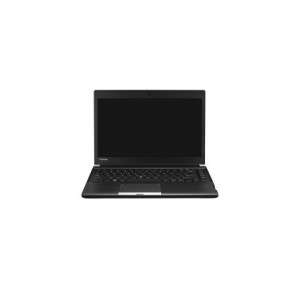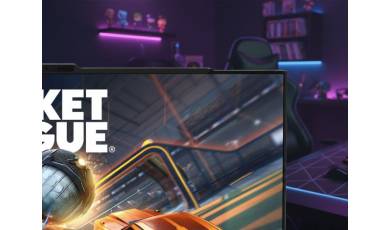Toshiba Portege R30-A-17C PT341E-077083CE specs.
Laptops Specs >> Toshiba >> Toshiba Portege R30-A-17C PT341E-077083CE| Specifications | | | Reviews | | | Useful keys |

Operating System TOSHIBA Portege R30-A-17C PT341E-077083CE
Operating system installed:
Windows 7 Professional
Operating system architecture:
64-bit
Processor TOSHIBA Portege R30-A-17C PT341E-077083CE
Processor manufacturer:
Intel
Processor family:
4th gen Intel Core i7
Processor series:
Intel Core i7-4600 Mobile series
Processor socket:
Socket G3
Processor model:
i7-4610M
Processor cores:
2
Processor threads:
4
Processor frequency:
3 GHz
Processor boost frequency:
3.7 GHz
Processor operating modes:
64-bit
Processor cache:
4 MB
Processor cache type:
Smart Cache
Memory TOSHIBA Portege R30-A-17C PT341E-077083CE
Internal memory:
16 GB
Maximum internal memory:
16 GB
Maximum internal memory (64-bit):
16.384 GB
Internal memory type:
DDR3L-SDRAM
Memory clock speed:
1600 MHz
Memory layout:
2 x 8 GB
Hard Drive & Optical Drive TOSHIBA Portege R30-A-17C PT341E-077083CE
Storage media:
SSD
Number of HDD installed:
1
Total storage capacity:
256 GB
Disc types supported:
CD,CD-R,CD-RW,DVD,DVD R,DVD RW,DVD-R,DVD-RAM,DVD-RW
Optical drive type:
DVD Super Multi DL
Card reader integrated:
Yes
Compatible memory cards:
MMC,MicroSD (TransFlash),MiniSD,SD,SDHC
Display & Graphics TOSHIBA Portege R30-A-17C PT341E-077083CE
HD type:
Full HD
Display diagonal:
13.3"
Display resolution:
1920 x 1080 pixels
Aspect ratio:
16/9
Display surface:
Matt
LED backlight:
Yes
Touchscreen:
No
Graphics adapter model:
Intel HD Graphics 4600
Graphics adapter family:
Intel HD Graphics
Graphics adapter dynamic frequency (max):
1300 MHz
Graphics adapter base frequency:
400 MHz
Graphics adapter:
Yes
Graphics adapter memory:
4 GB
Built-in Devices TOSHIBA Portege R30-A-17C PT341E-077083CE
Front camera:
Yes
Front camera resolution (numeric):
0.9 MP
Interfaces TOSHIBA Portege R30-A-17C PT341E-077083CE
Charging port type:
DC-in jack
Docking connector:
No
Ethernet LAN (RJ-45) ports:
1
HDMI ports:
1
VGA (D-Sub) ports:
1
Input Devices TOSHIBA Portege R30-A-17C PT341E-077083CE
Keyboard layout:
QWERTY
Keyboard number of keys:
87
Pointing device:
Clickpad
Audio TOSHIBA Portege R30-A-17C PT341E-077083CE
Microphone:
Yes
Number of speakers:
2
Battery TOSHIBA Portege R30-A-17C PT341E-077083CE
Battery life (max):
9 h
Battery technology:
Lithium-Ion (Li-Ion)
Number of battery cells:
6
Power TOSHIBA Portege R30-A-17C PT341E-077083CE
AC adapter output current:
3.42 A
Physical Characteristics TOSHIBA Portege R30-A-17C PT341E-077083CE
Product type:
Notebook
Product colour:
Black
Housing material:
Magnesium
Depth:
227 mm
Height:
26.6 mm
Height (front):
1.83 cm
Height (rear):
2.66 cm
Width:
316 mm
Weight:
1.5 kg
Reviews, Questions about Toshiba Portege R30-A-17C PT341E-077083CE
Write Review / Ask a question about Toshiba Portege R30-A-17C PT341E-077083CE





